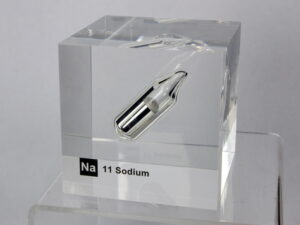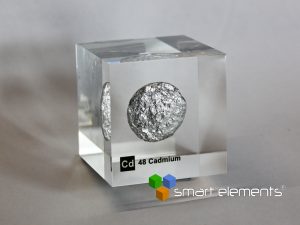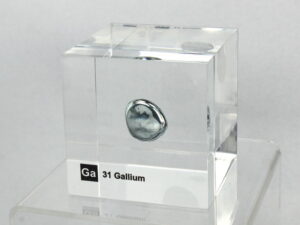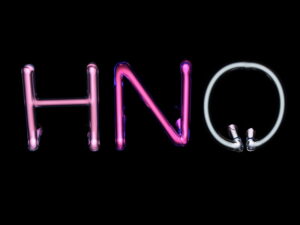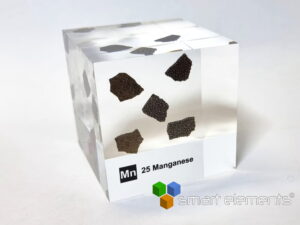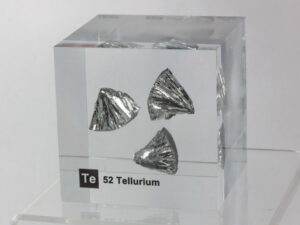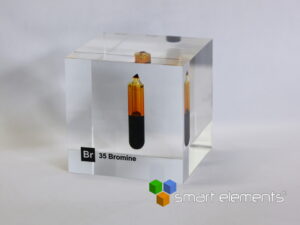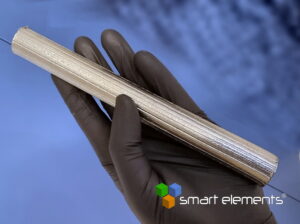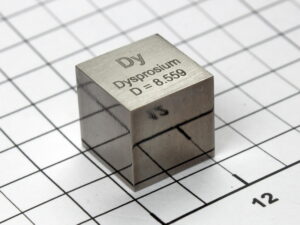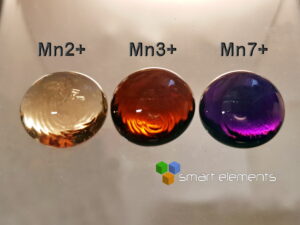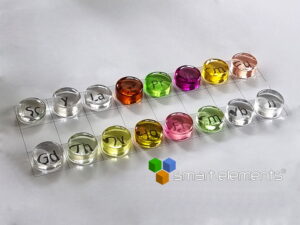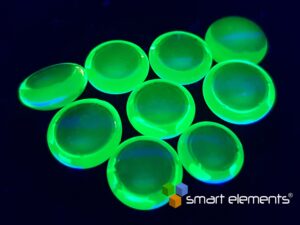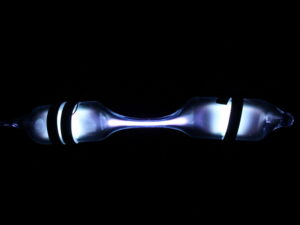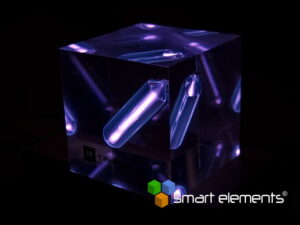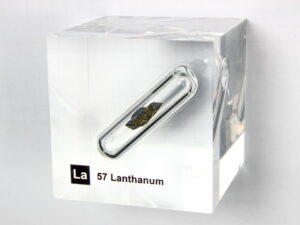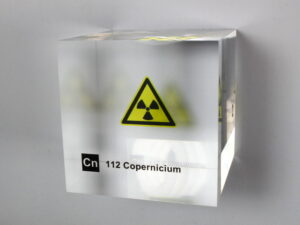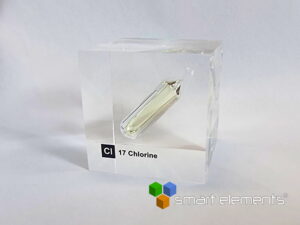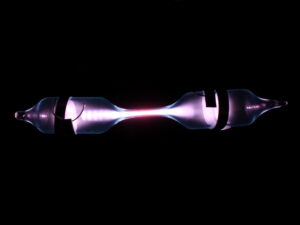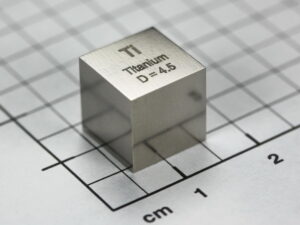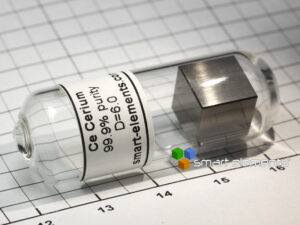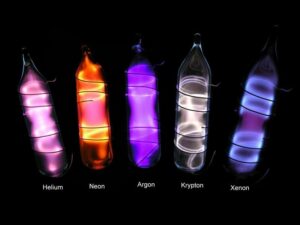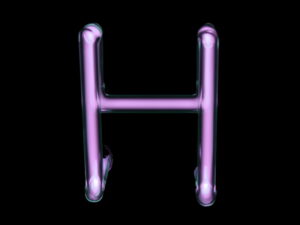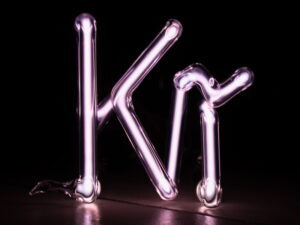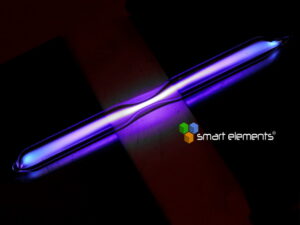Experience the fascinating phenomenon as high-purity cesium chloride under vacuum is excited by a simple Tesla coil. The white salt immediately undergoes a stunning transformation, turning into a dark blue hue amidst a bluish glow. This captivating effect is a result of chlorine atoms being “ejected” from the CsCl crystal lattice, causing the salt to assume its blue color. After a few minutes, the blue hue gradually fades away and turns blue again, when excited. This phenomenon is called f-center formation.
An F center, also known as a Farbe center (derived from the German term “Farbzentrum,” where “Farbe” means color and “zentrum” means center), refers to a specific crystallographic defect found within a crystal lattice. This defect occurs when an anionic vacancy within the lattice is filled by one or more unpaired electrons. Due to this configuration, electrons residing within such vacancies have a tendency to absorb light within the visible spectrum. As a result, a typically transparent material undergoes a transformation and becomes colored. The intensity of the compound’s color is directly proportional to the quantity of F centers present. Essentially, F centers represent a type of color center within the crystal structure.
[yotuwp type=”videos” id=”hudEE2BxdjQ” player=”width=640&playing_description=0″]
